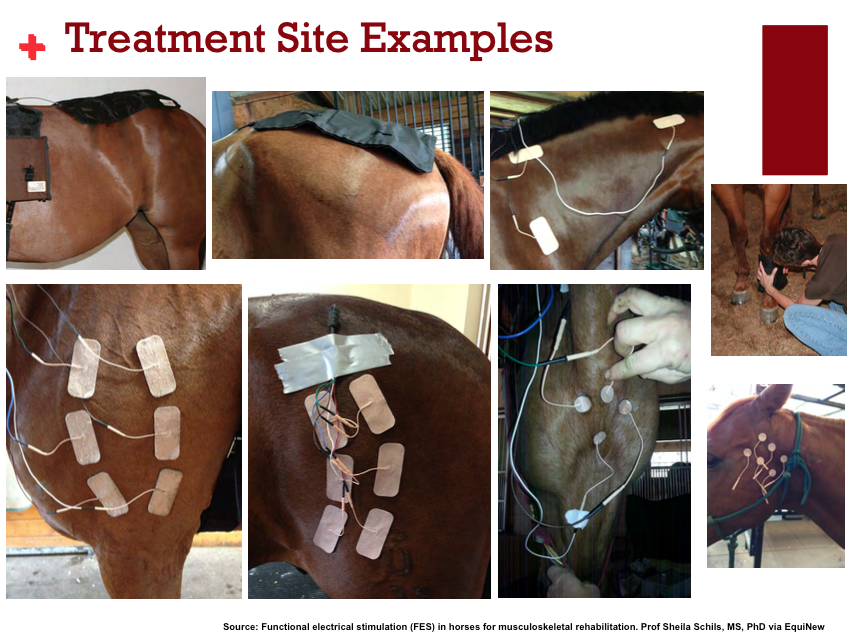Functional Electrical Stimulation (FES)
Alta Equine is proud to provide our equine patients with Functional Electrical Stimulation (FES). This electrotherapy treatment modality is utilized to improve and restore normal muscle function and provide pain relief. FES has been used extensively in human medicine for several decades (cardiac pacemakers are a type of FES) and has been proven to reduce muscle hypertonicity and reeducate muscle memory. New research has shown significant improvements in the symmetry of the core support muscles in the back of the horse through FES treatment.
Equine practitioners in the United States and Europe currently use FES in equine rehabilitation and performance enhancement.
Benefits of common therapeutic uses of FES:
Relieve chronic tension
Pain relief by reducing muscle spasticity
Improved Range of Motion (ROM) and joint mobility
Reeducation of muscle function to prevent further injury
Maintain muscles mass, applicable to horses out of work
Reduces muscle spasms
Reverses muscle atrophy
Strengthening of muscles and tendons
Decreased swelling related to muscle injuries
Improves motor control and strength
Effective on deep muscle groups
Minimize scar tissue formation during the healing process
Decreased rehabilitation times
Treatments can be applied to the neck, back, and pelvis. It mimics the body's own motor neuron signalment for muscle contraction via computer-generated electrical impulses delivered through surface electrodes on the skin. The FES signal can reach inches below the skin's surface to stimulate the horse's deep muscle, tendon, and ligament tissues. Horses tend to tolerate this treatment well as the voltage is very low, sedation is not required. In many cases, horses can be ridden shortly after treatment.
FES can be a useful tool in rehabilitation as it allows for stimulation of injured tissue without the risk of exercise exasperating the issue. Healthy muscle function is a cyclic response with equal moments of contraction and relaxation. Muscle tightness is the body's way of protecting the injured tissue from further damage. Muscle fibers held in a contracted state for extended periods could use some assistance in returning to their normal functioning pattern. Once the underlying cause of muscle spasms has been addressed, FES therapy can help your equine athlete prevent a recurrence by building better quality muscle.
Often horses out of work due to illness or injury experience muscle wasting or "atrophy." FES can be a valuable tool in maintaining muscle mass, rebuilding tone, and improving new muscle quality in rehabbing or recovering horses. A thorough veterinary examination should initiate any FES treatments, and periodic follow-up examinations by the attending veterinarian are essential.
References & Resources:
Functional Electrical Stimulation (FES)



